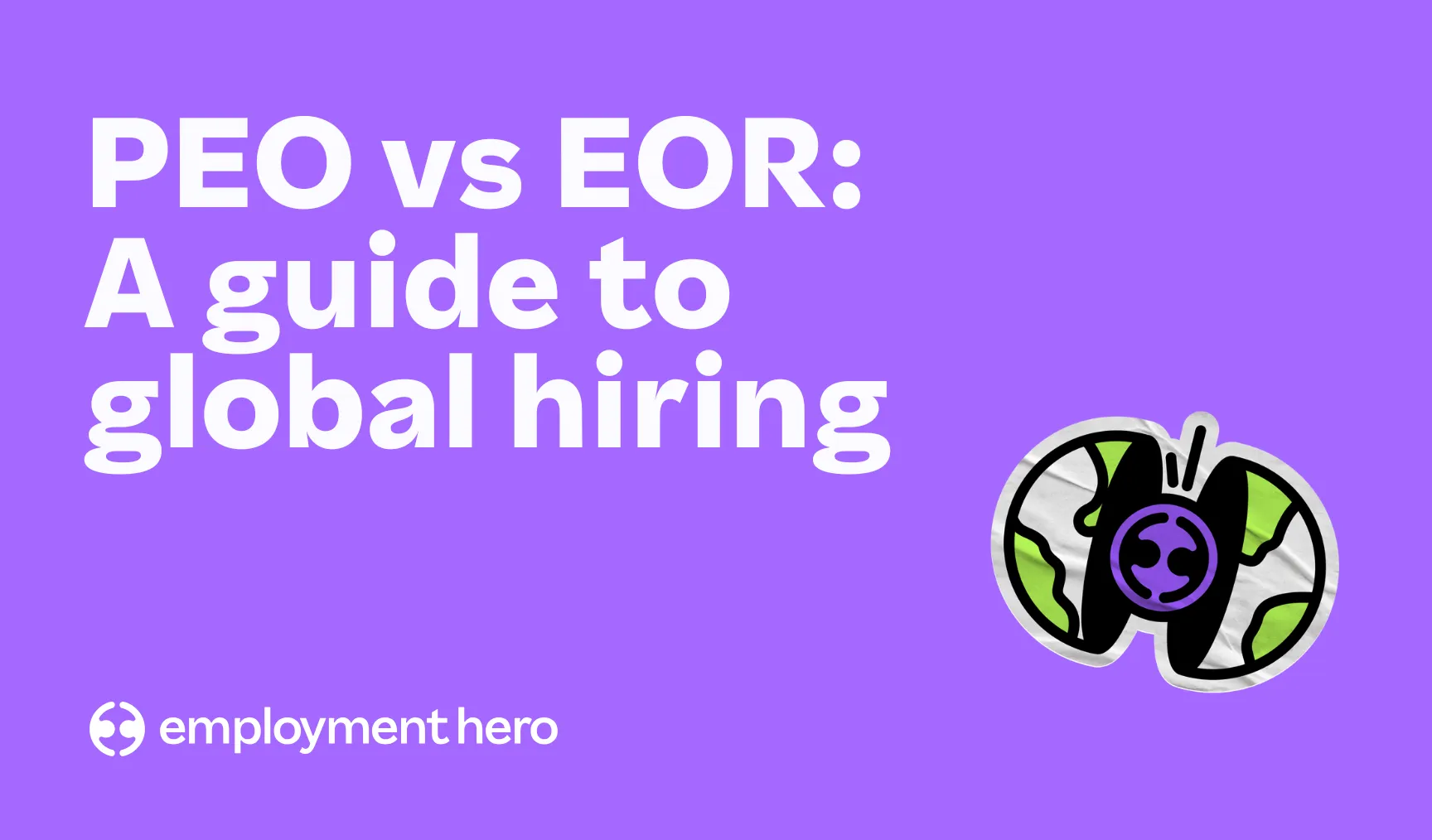Why is learning and development so important during tough economic times?
Tough economic times impact you, your business and your staff. If you’re trying to cut costs, reallocate budgets and possibly even restructure your business – your staff are going to be affected.

How effectively are you wielding learning and development opportunities with your team? Research from GRiD has revealed that over the past 12 months, employees felt that their health and wellbeing had declined mentally, physically, financially and socially, with financial wellbeing affected the most. Because of this, four in five employers have increased their health and wellbeing support or employee benefits to adapt to the changing circumstances of their staff. We know times are tough, and the structure and approach in your business may shift, but ensuring you retain your top talent is going to be key in how you navigate difficult times. In our Talent Insights Report (conducted January 2023), 17% of respondents listed ‘a lack of training opportunities’ in their top three reasons for seeking a new role, coupled with the 22% who opted for a ‘lack of career opportunities’. You can quickly see that if you’re not offering your staff the option of learning, you may find your top talent looking elsewhere. Our suggestion? See L&D as a retention opportunity.
Retain your employees by showing your commitment to them
What we love about learning and development is that it’s a great way to show commitment to your employees. Especially during tough economic times, where you may have been forced to implement cost-cutting measures, perhaps even redundancies. By investing in L&D, you can show how you’re dedicated to employee growth and development, which can help with employee loyalty and engagement. When employees perceive opportunities for learning and advancement within the company, they are more likely to stay — this enables you to keep some of your top talent, and let’s face it: avoid turnover costs. Our Talent Insights Report showed that 2023 could be the year employees look to move laterally within your organisation. Our data showed that 39% of employees said they wanted their next step to be a promotion or lateral move, compared to 36% who said they wished it to be in a new organisation. L&D really opens up the possibilities for your staff to climb the internal ladder and move laterally within your business. Investing in learning and development will also help you future-proof your business. Economic downturns are temporary, and eventually, markets recover and stabilise. By investing in L&D during challenging times, you can position your business for future success through developing a highly skilled and adaptable workforce. A workforce with a more adaptable skill set will help you seize new opportunities and thrive when economic conditions improve.
Upskill and reskill your staff
There is the possibility that during an economic downturn you could find your business with a skills shortage, because of headcount reductions or changes in the market. To adapt to a shifting landscape, L&D programmes can help you and your team upskill in some much needed areas to help your business stay competitive. This is important if you aren’t in the right position to hire a member of staff full-time or a freelance contractor. Having a member of your team step up has a lot of benefits for both you and them, as long as it does not overburden them, which could lead to burnout. L&D programmes help employees develop the competencies to meet changing job requirements, increasing their employability and enabling them to transition to new roles or industries.
Foster a learning culture that can adapt quickly
To survive and thrive during an economic downturn, you need your team to be adaptable and bring ideas to the table. Youwant to empower them to better the business. If you invest in L&D, you won’t just be upskilling your team, but also helping them shift mindsets, navigate uncertainty, build self-belief and much more. Learning and development isn’t just about increasing industry-specific skills, there are soft skills to consider too. And while you may have an Employee Assistance Programme (EAP) to tackle the more individual challenges, L&D can really help bridge the gap from a fixed mindset to a growth mindset. A team that can help you identify opportunities and feel confident to run with those ideas are going to be invaluable to you. A byproduct of a shifting mindset and upskilling is going to be increased productivity and performance. A study from Research Gate showed that employees allowed to take part in ‘big decision-making talks’ are more efficient. When you allow your team a voice in company decisions, they feel like their place in the workforce matters, and that they have a voice that’s respected. These feelings translate to higher productivity rates.
When you’re ready to hire, it will help you attract fresh talent
Organisations that prioritise L&D create a reputation as a desirable place to work. So if you’re currently working on your employer brand, having a defined L&D offering as part of your benefits package will be a feather in your cap. It’s also worth considering that during tough economic times where job opportunities may be scarce, or competition for talent is high, candidates are more likely to choose companies that invest in employee development. You could help your business stand out by showcasing how you invest in the development of your people and team; using specific examples in job adverts and on your website could also be a great tactic.
How could you go about building an L&D programme for your business?
- Identify what your business needs: look to understand the specific goals and objectives of your business and the skills or knowledge gaps that exist. This can be done through employee surveys, performance evaluations or discussions with your management team and department heads.
- Set clear objectives: based on the identified needs, establish clear and measurable learning objectives that align with your business’ goals. These objectives should outline what your team should be able to do or know after completing the programme.
- Conduct a training needs analysis (TNA): assess the current competencies of employees to determine the skills and knowledge areas that require improvement. This analysis helps in customising the training content and delivery methods to meet specific needs.
- Determine learning methods: consider a range of learning methods that best suit the needs of your organisation and the target audience. These can include instructor-led training, e-learning modules, on-the-job training, mentoring, workshops, simulations or a blended approach.
- Develop content: create or curate training materials and resources that align with the identified objectives. Ensure that the content is engaging, relevant and accessible to learners. This may involve designing presentations, e-learning modules, videos, job aids or interactive activities.
- Establish delivery channels: determine how the training content will be delivered to learners. This could involve utilising a learning management system (LMS), intranet portals, virtual classrooms or physical training facilities. Consider the availability and preferences of your employees to ensure accessibility and engagement.
- Implement the programme: roll out the L&D programme in a phased manner or as a pilot, depending on the scale and complexity. Communicate the programme’s purpose, benefits and expectations to all stakeholders, including employees, managers and senior leaders.
- Monitor and evaluate: regularly assess the effectiveness of the L&D programme to measure its impact and make necessary improvements. Use feedback from learners, managers and key performance indicators to evaluate the programme’s success in closing skill gaps and meeting organisational objectives.
- Continuous improvement: update and refine the L&D programme based on feedback, changing organisational needs and emerging industry trends. Keep abreast of new technologies and innovative approaches to learning to enhance the effectiveness and relevance of the programme.
- Foster a learning culture: encourage a culture of continuous learning and development within the organisation. Provide opportunities for employees to engage in self-directed learning, share knowledge and collaborate with colleagues.
Employment Hero can help your L&D efforts
We strongly believe that L&D can play a vital role during challenging economic times for you and your business. If you have the resources spare to further invest in your workforce, we’d highly recommend Employment Hero’s Learning Management System (LMS), it’ll help you:
- Invest in your team: promote continual development. It’s what your team wants. Give them the power to choose how they develop their skills with our range of courses.
- Promote a culture of learning: make active learning a lot easier. Give your team the tools they need to grow and develop on their own initiative.
- Boost retention rates: keep your team feeling fulfilled, up to date and you’ll feel the positive impact well down the line.
If you’re looking for more help, reach out to our team today and book a demo to see how an all-in-one HR and payroll platform could help you and your business, or take a look at how to use our LMS here.
Related Resources
-
 Read more: Setting employee expectations: Your guide to getting it right
Read more: Setting employee expectations: Your guide to getting it rightSetting employee expectations: Your guide to getting it right
Learn how to set clear employee expectations to boost productivity and engagement. Discover actionable tips and strategies for leadership success.
-
 Read more: PEO vs. EOR: A guide to global hiring
Read more: PEO vs. EOR: A guide to global hiringPEO vs. EOR: A guide to global hiring
Contents Expanding your business into new markets is a powerful growth strategy. But hiring talent globally introduces a maze of…
-
 Read more: How to build a global team without a local entity
Read more: How to build a global team without a local entityHow to build a global team without a local entity
Learn how to streamline your hiring and expand your UK business globally with an Employer of Record (EOR) without the…





















